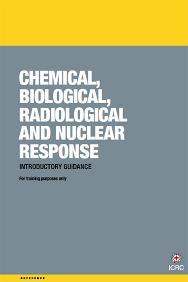Chemical, biological, radiological and nuclear response: Introductory guidance


The ICRC might be required to undertake activities in locations where there is the potential for intentional or unintentional release of chemical, biological, radiological or nuclear (CBRN) agents. In such situations, ICRC staff may be at risk of exposure to CBRN agents with potentially significant consequences for their health and safety, and for the ICRC’s ability to undertake field operations.
This document provides basic guidance for those who know comparatively little about CBRN response. It covers four main areas: CBRN agents, CBRN events, the basics of CBRN response and handling allegations of use of CBRN weapons. It is intended to be used for training purposes but further, practical training by a CBRN specialist is highly recommended.
ICRC, 2014
